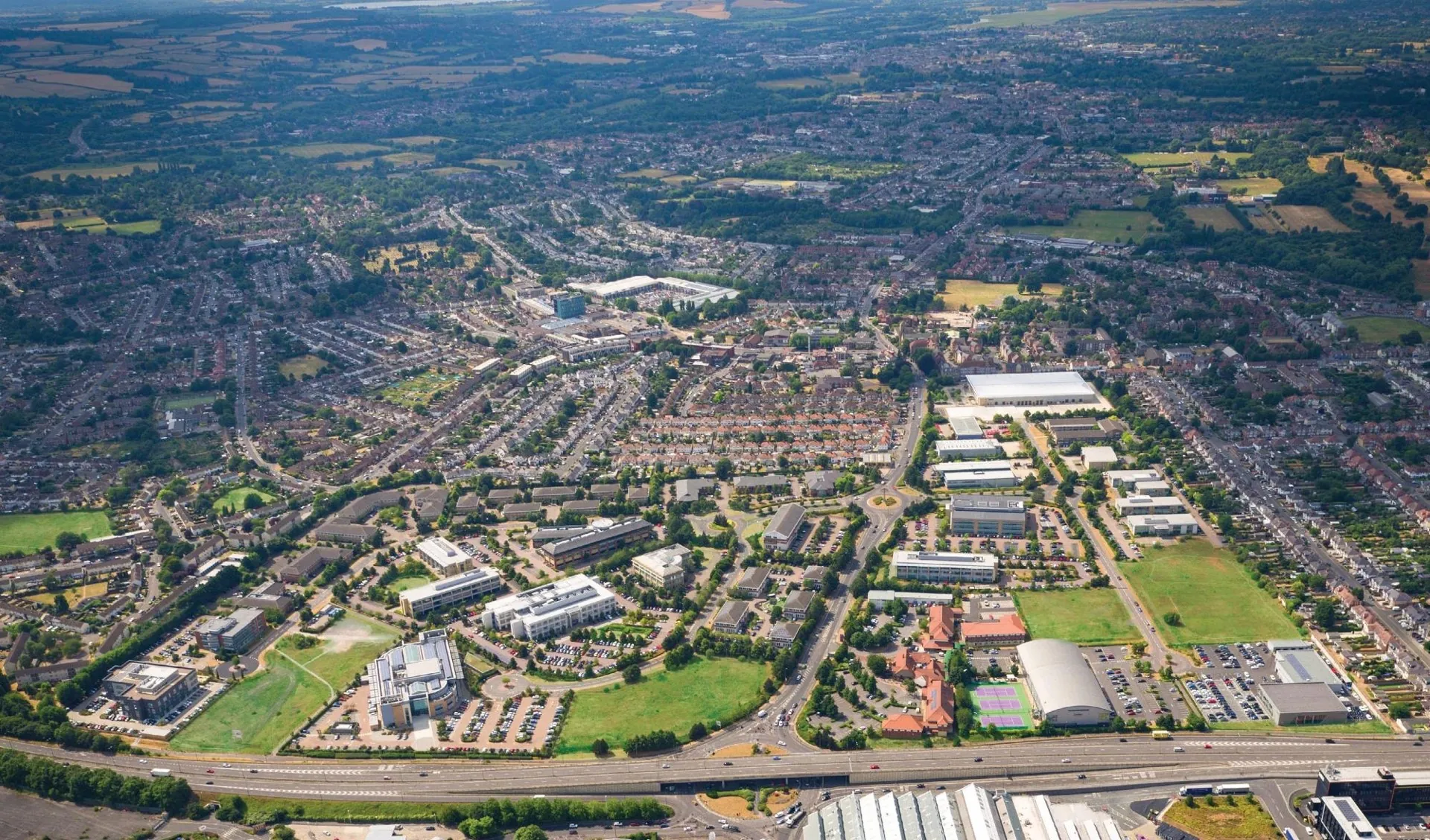The future is digital
The world of science and innovation is more important than ever. From studying the tiniest particles to photographing the tallest solar flares, novel ways of investigating the universe around us are opening new avenues into the unexplored. That’s why at ARC we’re supporting the people behind the science, innovation and technology, creating meaningful relationships and connections between sectors, disciplines, and specialisms to help them succeed.
At Uxbridge we already have a growing number of pharmaceutical and biotech organisations alongside innovative businesses like Xerox and we’re excited to grow their network and community further.
We recently spoke with Alok Jha, science and technology correspondent at The Economist who shared his views on why the future is virtual, and how digital technology is playing an ever-increasing role in all aspects of science and ultimately our everyday lives .
A clinic on your wrist
“The covid-19 pandemic accelerated the digitisation of many parts of everyday life—meeting, shopping and watching events online have all become mainstream. So have remote medical consultations and a new generation of wearable health monitors will help.
At the consumer end, wearable devices such as Apple Watches and Fitbits have already become popular for those wanting to keep track of their fitness. Apple’s Watch has already received medical grade approval for features such as its electrocardiogram heart monitor and also its ability to measure atrial fibrillation. In the coming years, expect to see an increased blurring between consumer and medical uses for new versions of wearable devices. Future versions of Apple’s Watch will include new light-based sensors that can measure everything from body temperature to glucose or alcohol levels in the blood or even carbon monoxide poisoning.
Full medical approval for many of the new functions could take many years, but before that, the new smart watches could provide useful data to be used in conjunction with the now-familiar remote consultations with clinicians. They could help with general health monitoring and also to provide early clues of problems, which could then be investigated further by approved medical devices.”
mRNA vaccines
“Nothing in recent years can lay as much claim to the title of most immediately-world-changing technology as the mRNA vaccines for covid-19 developed by Pfizer-BioNTech and Moderna.
The technology behind mRNA seems to have come from nowhere during the pandemic but the research behind it had in fact been ongoing for several decades before SARS-CoV-2 ever spilled over into humans. The pandemic has comprehensively proved that mRNA is a safe platform for vaccines and drug companies are already thinking about what comes after covid-19. Potential diseases that could be tackled with this type of vaccination include influenza, chikungunya, Epstein-Barr virus, Zika, and respiratory syncytial virus. There is even an HIV vaccine in the works by Moderna (results expected in 2022), while BioNTech is working on an mRNA vaccine for malaria with trials due to start in a few months’ time.”
AIs for science
“These days, artificial intelligence (AI) has become worryingly hijacked by marketing teams, looking for ways to describe their mysterious secret sauce of whatever they are trying to sell you. But the most exciting frontier for AI is in basic science, in using clever computing to help researchers speed up their work or even create entirely new knowledge.
A good example is AlphaFold2, an AI built by DeepMind. It can predict the shapes of proteins, which are often composed of hundreds (or even thousands) of atoms arrayed in complex 3D structures. The shape of a protein determines how it functions within the body and many people before have tried to write software to help predict shapes. But AlphaFold2 was the first whose results were able to match the current scientific gold standard—X-ray crystallography. This process can take months (or years) and involves crystallising proteins and then shining X-rays through them. The resulting diffraction patterns allow scientists to try to infer the protein’s structure.
If AI can predict protein structures accurately, you might imagine drug companies would find it useful straight away to quickly simulate how a small-molecule drugs might interact with the protein to predict efficacy or side-effects; or they could even find or design completely new drugs to solve problems when proteins aren’t shaped or working properly in the body. And all before having to do the more expensive work of trying things out in animals or people.”
Metaverses
“Originally introduced as a concept in Neal Stephenson’s 1992 novel, “Snow Crash”, the Metaverse was a persistent, networked, virtual world, accessible via special goggles, where people could meet, flirt, play games, do business, and much more besides. Almost thirty years later, companies in Silicon Valley are buzzing with plans to build real versions of Mr Stephenson’s Metaverse that, at some point, they hope will become the successors to today’s internet.
Many of these metaverses are being built using Unreal Engine (UE), a piece of software that powers video games such as “Fortnite”. UE’s ability to build photorealistic 3D simulations of the real world means it has found widespread use among architects, film-makers, academics and many others. Epic Games, which makes UE, will soon release the fifth version of its software, giving wannabe Metaverse-builders the most sophisticated toolkit yet with which to build the kinds of worlds in which people might actually want to spend time talking, working or relaxing. Metaverses are an important strategy for some of the biggest companies—Facebook recently renamed itself Meta to jump on the opportunity and move away from being just a social media company. Microsoft and others want to build their own versions too. The future will be virtual.”



